Long before I planned my own trip to Iceland, I learned about a place called Silfra where the North American and Eurasian continental plates meet. In more scientific terms, Silfra is a rift in the divergent tectonic boundary between these plates — they are separating at a rate of 2cm per year, which builds tension that is typically released once per decade in an earthquake. Iceland’s location on this continental drift is the big reason there’s so much geothermal activity throughout the whole country.
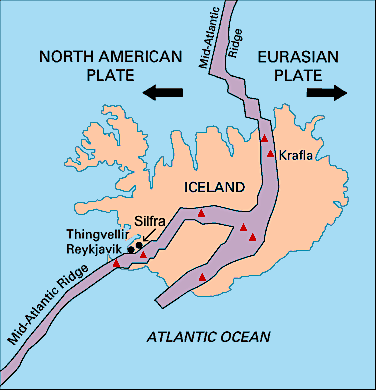
(image via)
So from a geological standpoint, Silfra in particular is a fascinating area. And for tourists, it’s noteworthy because the body of water where these plates meet at Thingvellir National Park is a stunning blue color with incredible visibility. You can see up to 100 meters (300 feet!) underwater while touching two continents at the same time.
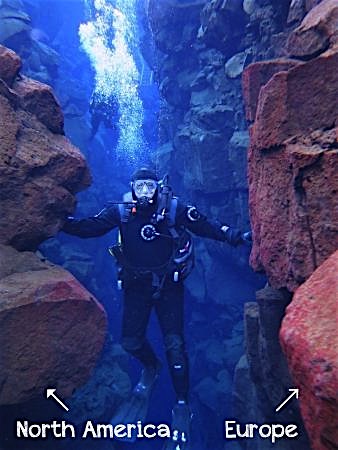
(image via)
Thingvellir National Park is an UNESCO World Heritage Site, designated so not only for the geological reasons mentioned above, but also because the Icelandic Parliament was established here in 930 and remained until 1798. This was the center of Icelandic culture for almost a millennium. (Random side note: as of 2016, there are only two UNESCO sites in all of Iceland. This blows my mind as it’s the most stunning country I’ve ever visited and its natural setting should be protected for generations to come.)
When I began planning my own trip to Iceland, there was no question that I would visit Silfra at Thingvellir National Park and swim in its blue water. My first inclination was to scuba dive, but upon researching the hefty price of that activity (around $300 USD) I ruled it out. But it sure would have yielded great photos…
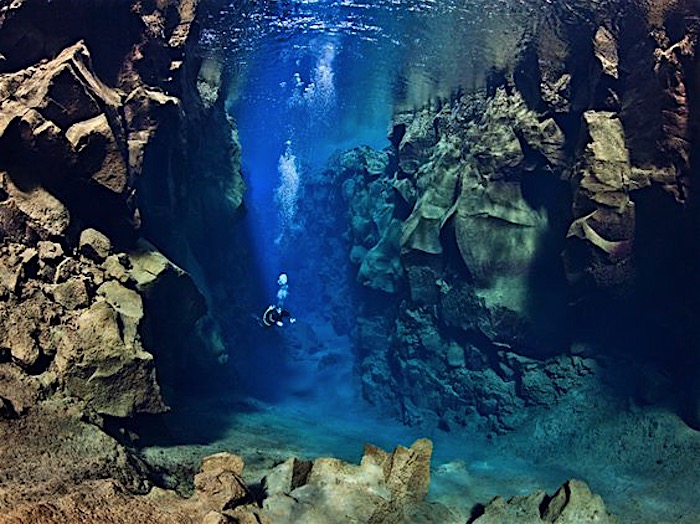
(image via)
Lots of companies offer snorkel trips for around $135 USD and I settle on a tour with Arctic Adventures. It’s an activity you can’t do on your own unless you have really specific gear — the water here is super cold, so a dry suit (not a wet suit) is necessary to avoid hypothermia. But more on that experience in a moment. First, here are a few photos from the lake at Thingvellir National Park on the morning of my snorkel session.


This is the fissure where the continents meet — our group will swim through there shortly:

The high visibility is apparent from above — you can peer right down into the crevice and see the bottom.

This is the platform where tours enter the water. We’ll be back shortly after we get suited up…

All of the scuba and snorkel companies have a small set-up area near the entry point where instructors go over safety and properly outfit each guest.


Putting on the dry suit is a multi-step process. First, we keep our own clothes on as a base layer (these should stay dry if all goes as planned). Then we put on this fleece-lined, down-filled insulation layer:
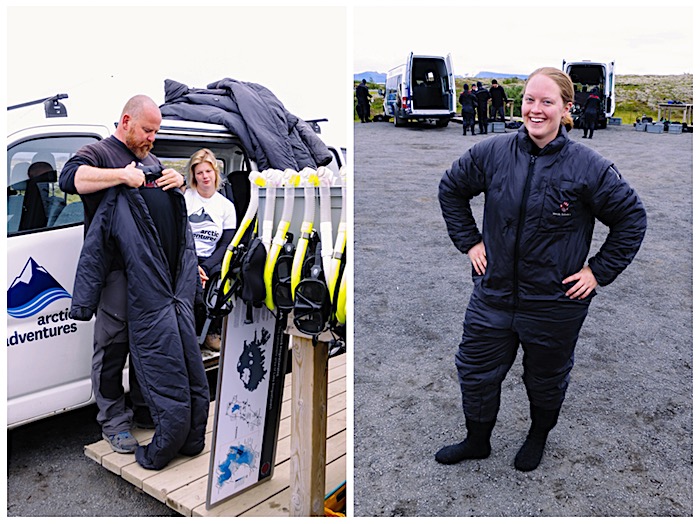
And then we add the outer layer — this is the waterproof part. There are seals at the wrists and neck to keep out water, but it still might seep inside if the seal is not perfect. The instructors actually catch that the neck opening on my suit is defective and swap it out for a new one (thanks guys!). The suits are rather cumbersome to get into and out of, but it’s a necessary part of the process to stay safe in freezing cold water.
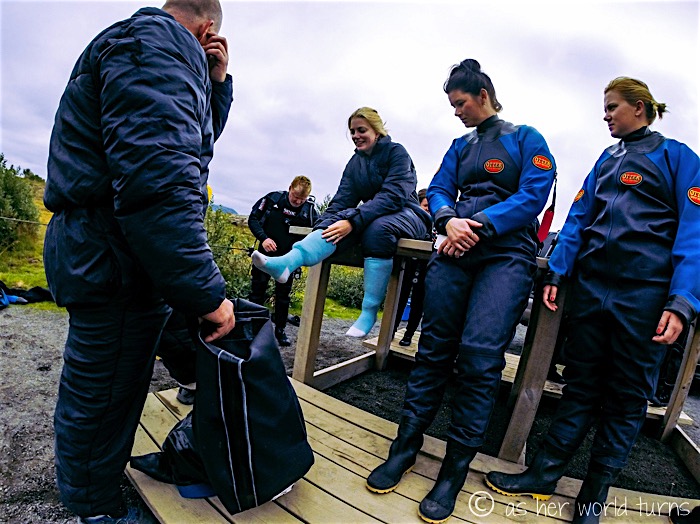
When all is said and done — dive hood, mittens, and foot booties in addition to the dry suit — only my face is left exposed. And I’ll have a snorkel mask over my eyes and nose when I get into the water, so only the area around my mouth will get cold.
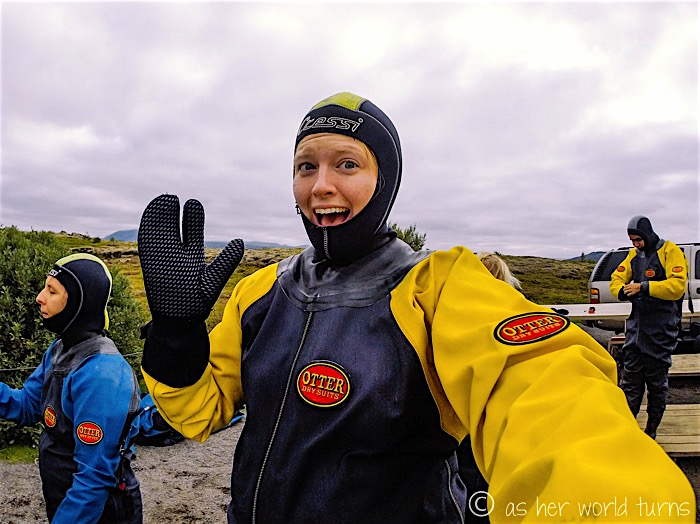
Our instructor goes over the terrain of Silfra so there won’t be any surprises once we get in the water:
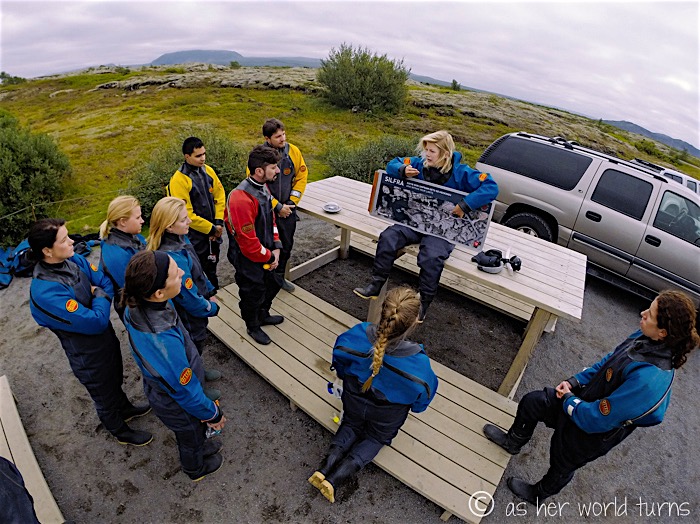
One of the other guests is using this piece of equipment I’ve never seen before — it’s a dome that attaches to a GoPro so you can take shots that are split above and below the water’s surface.

Here’s the kind of photos it takes:
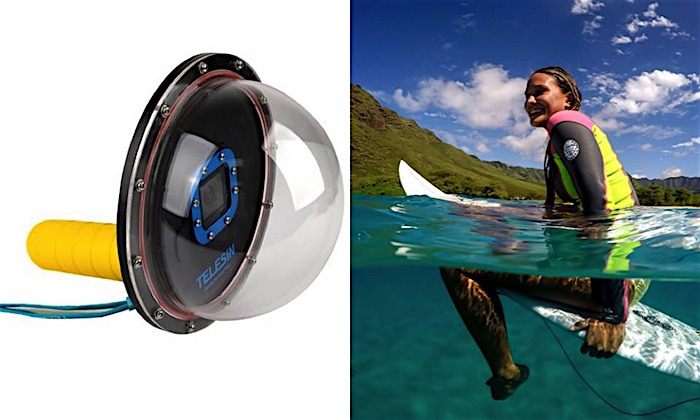
Sweet, right? They’re a little pricey. Someday I’d love to add this to my collection of camera gear.
In the meantime, I’m using a different GoPro accessory for the first time today — it’s a red filter intended to color correct underwater images, and I purchased it specifically for this trip. But it turns out to be a major fail. The filter comes on and off pretty easily, but since I am wearing dive mittens my hands are the opposite of nimble and I have to leave the filter on the whole time. So any photos shot above water come out bright red and necessitate compromising image quality to remove the red in my photo editing software. But even for underwater shots — i.e. the whole purpose of using the filter — I’m disappointed with the results; it’s too distorting and I wish I’d just used the GoPro without it. At least this was only a $20 accessory! Upon further research, it turns out this filter works best in deeper water as the darker it gets you start losing color, and red goes first (hence the filter to restore red). So there actually isn’t a need for this when snorkeling at the surface and it’s best saved for scuba diving. Photographer fail. THEN get this: my GoPro case starts to leak during this snorkel excursion. Fortunately I am able to save the camera by storing it in rice overnight, but that is still a bummer. I do my best to save these images in editing — hopefully the intense sapphire blue color of this water still comes through as you view the photos below.
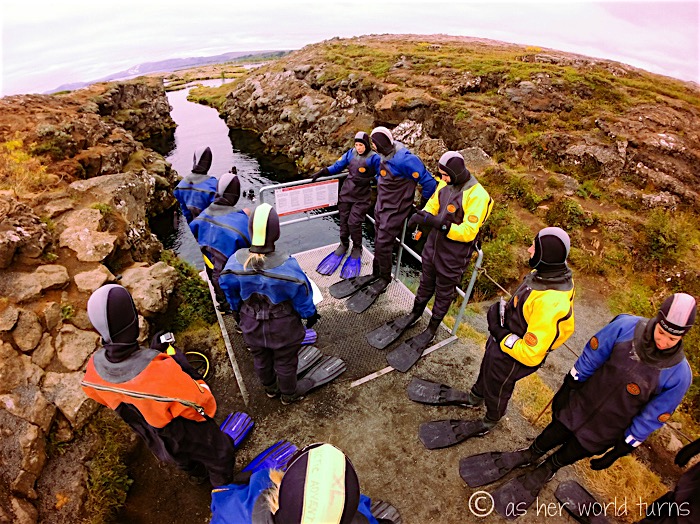
Click here to see a before and after photo of the above image — the original was very red due to the filter, but my editing software was able to save it.
Time to get into the freezing cold water…
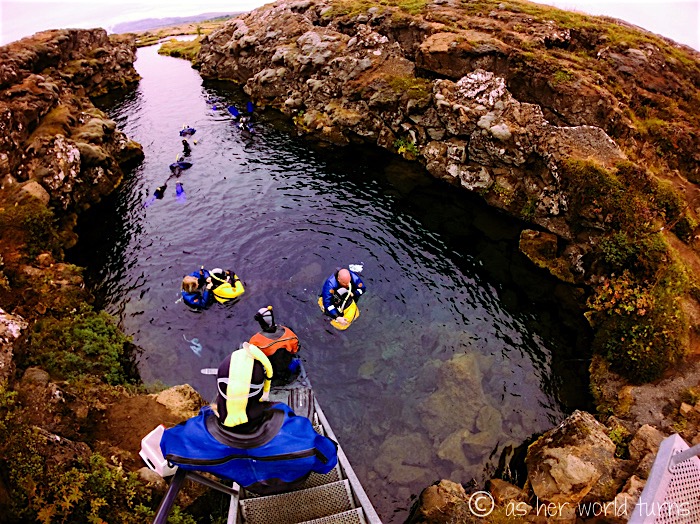
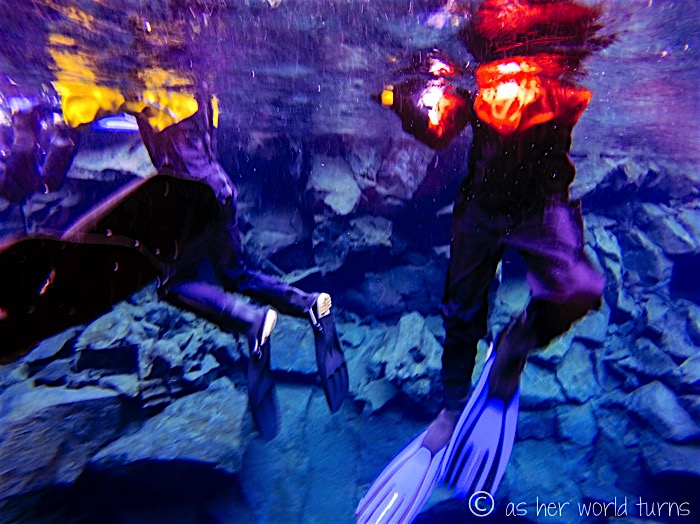
The visibility here is immediately impressive — this is a look back at the ladder we climbed down, way off in the distance:
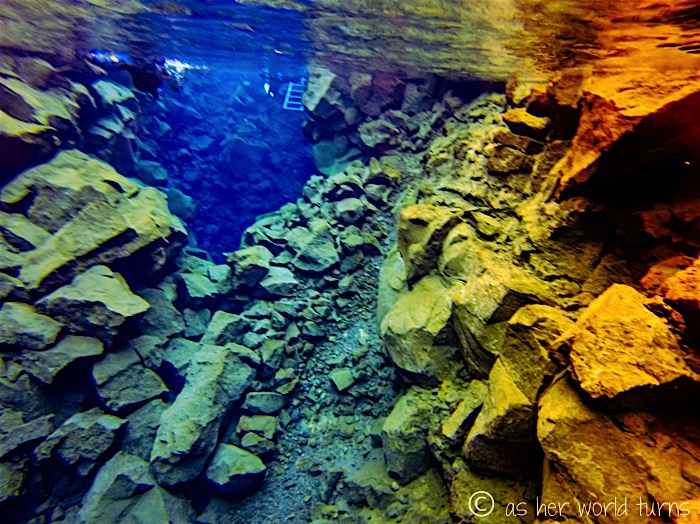
My lame attempt at a split surface shot, without the proper accessory:
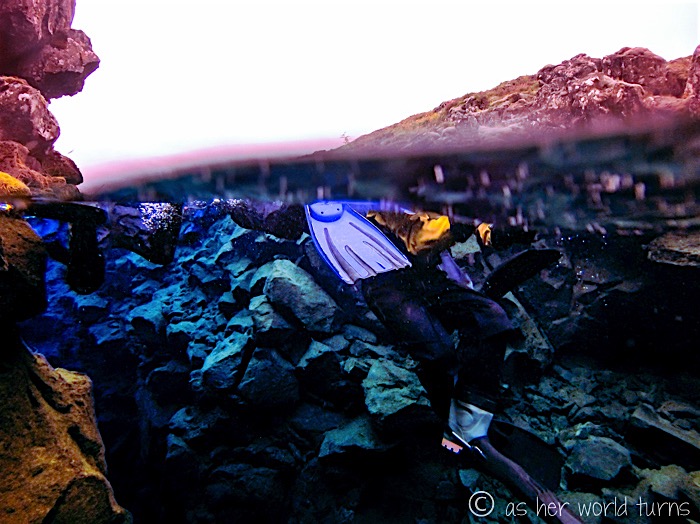
That intense blue below is why people come to the Silfra fissure:
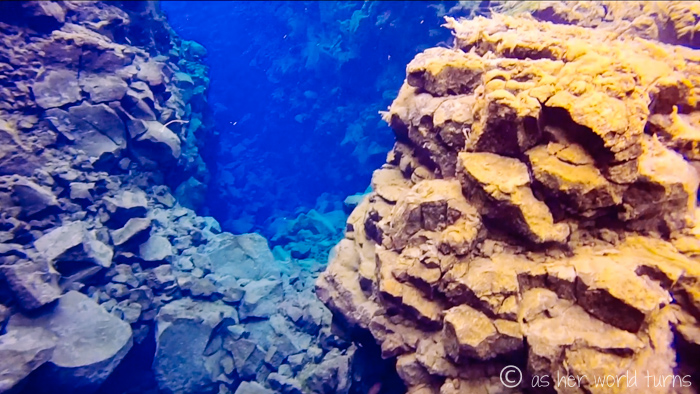
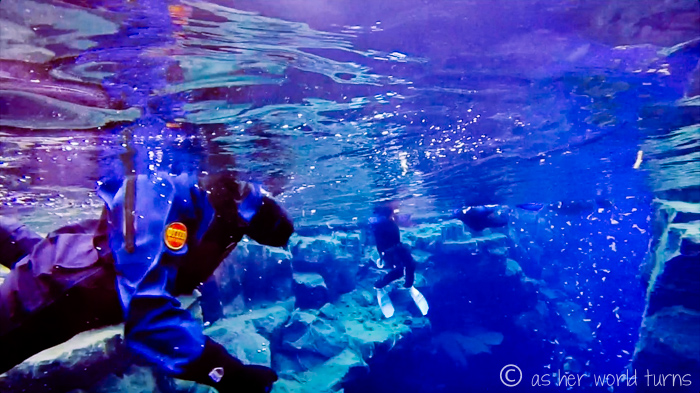
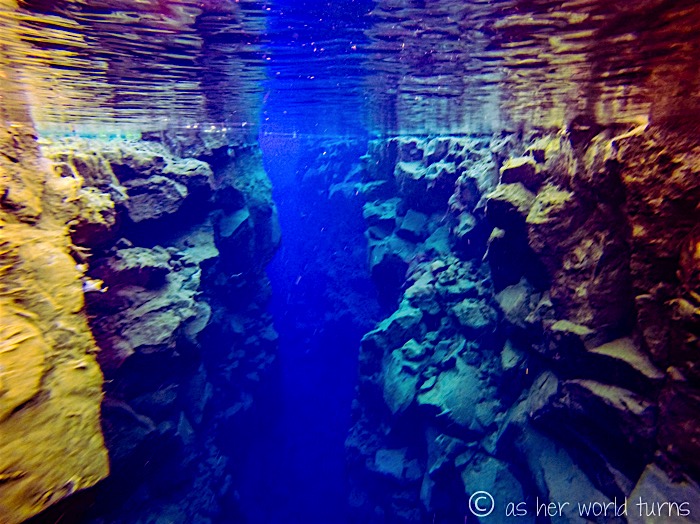
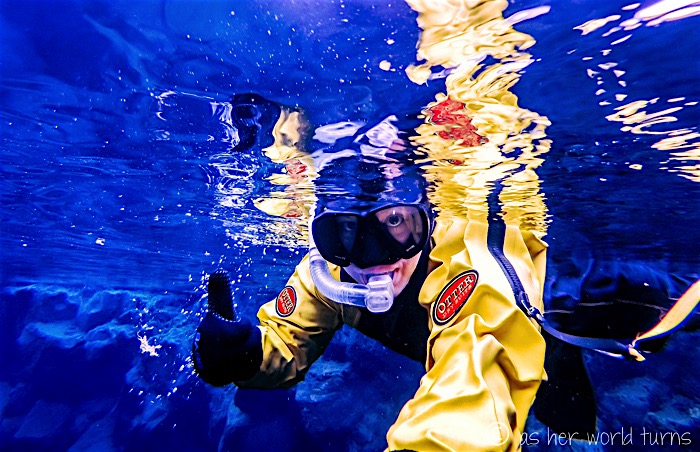
It’s like a rainbow of colors down here:
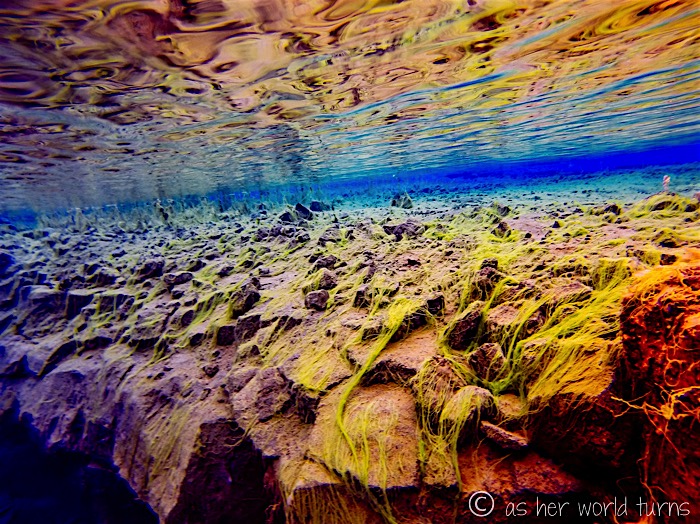
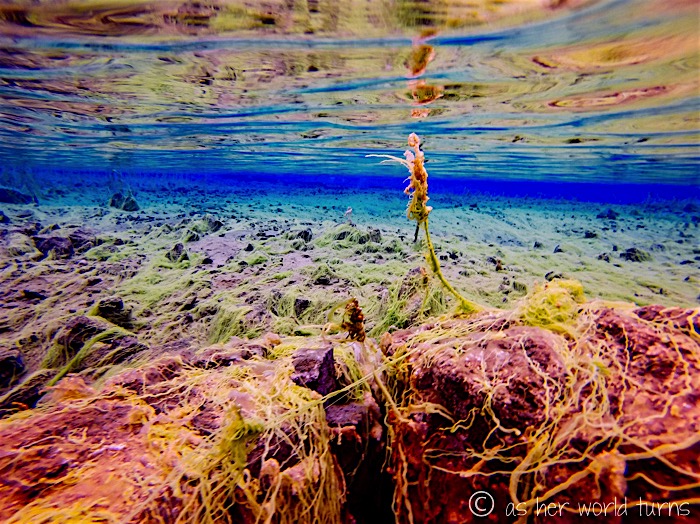
The deepest, most blue part is called the Cathedral:
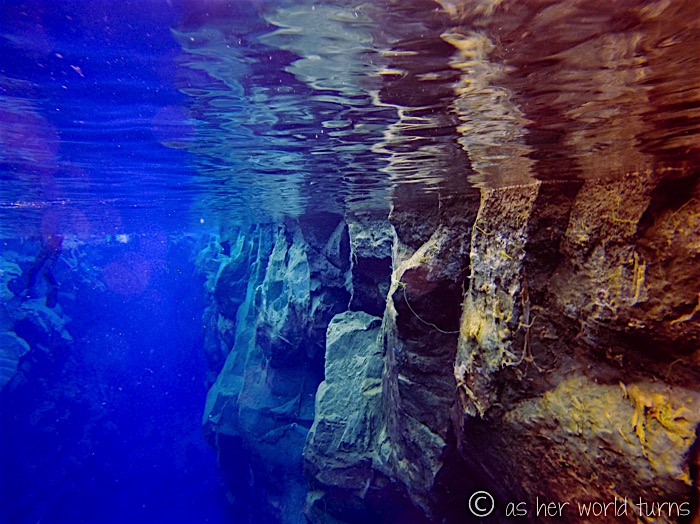
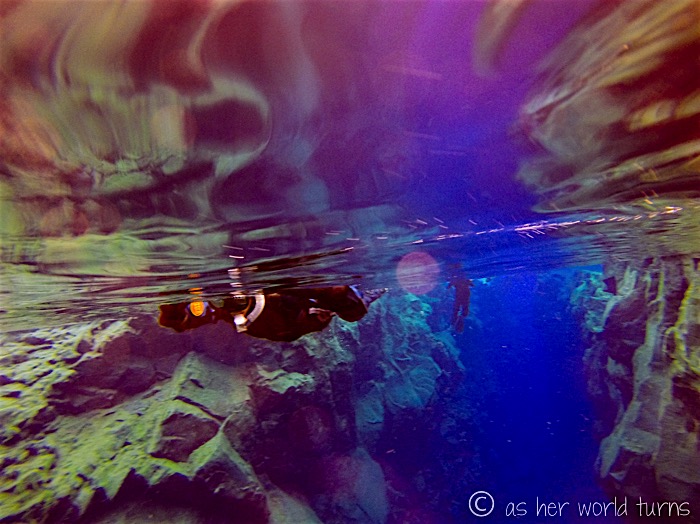
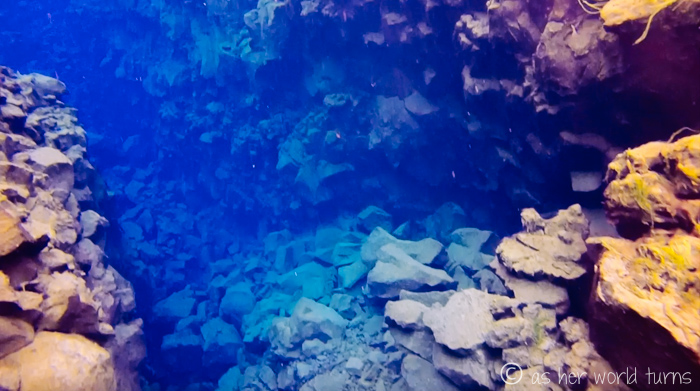
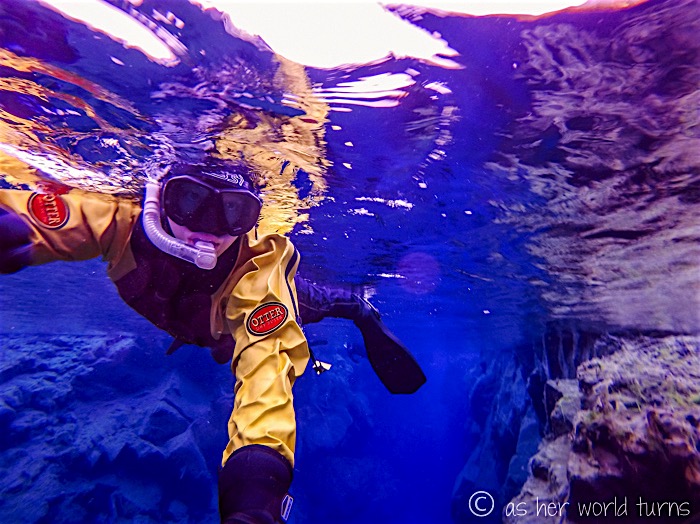
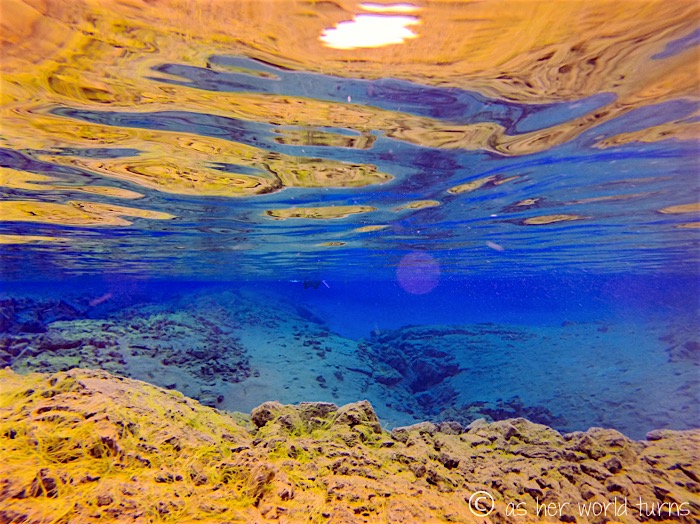
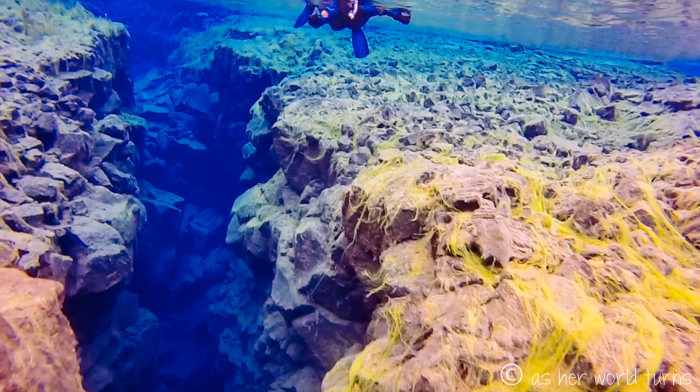
These basalt columns below remind me of the church floor at Kirkjugolf — they’re natural, hexagonal stacks that form when lava cools and contracts, causing the ground to crack into this shape.
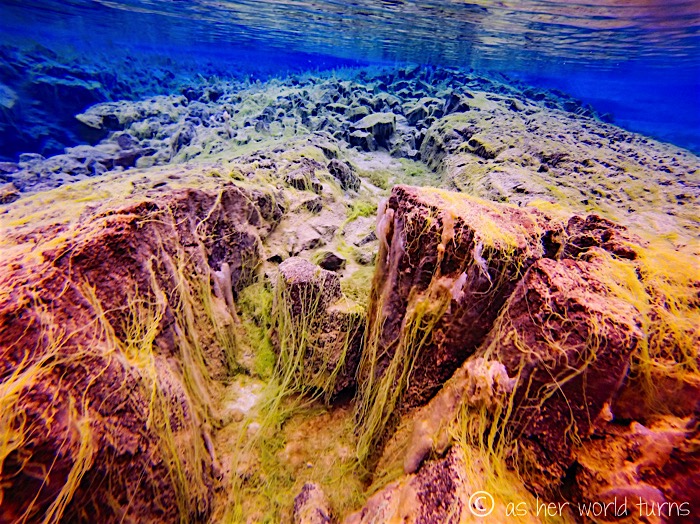
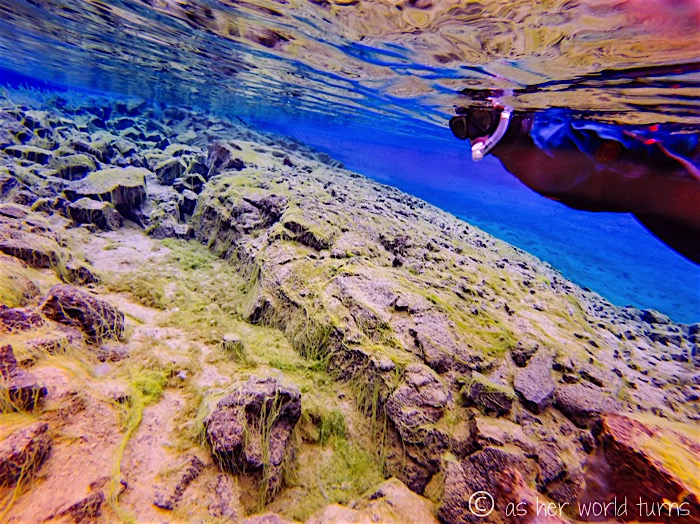
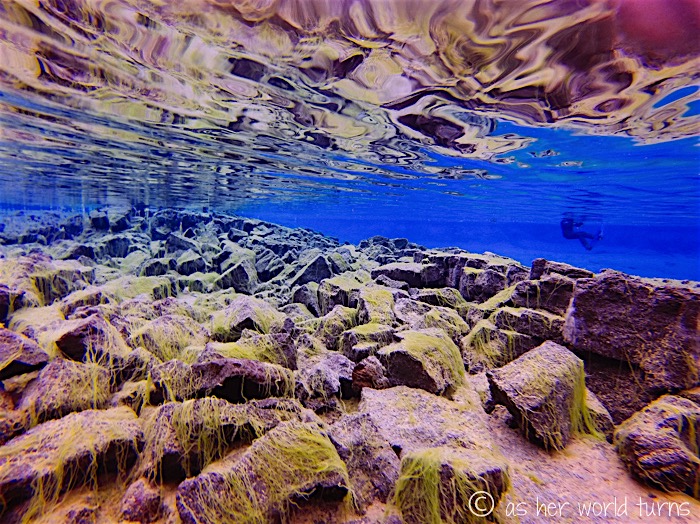
This is a really spectacular place and I’m not sure my photos do it justice.
But I am pleased with the video footage! It gives a better sense of what it’s like to float through the deep blue waters at Silfra. Check it out:
As for the snorkel activity itself, you should understand that this experience is about 3+ hours total, of which about 25 minutes is spent in the freezing water, and the price tag is $135 USD. I love underwater adventures and there was no question that this was going on my Iceland itinerary. If you’re considering this activity, you probably already have an instinct if this is for you or not. It’s not cheap or comfortable, but if that doesn’t matter to you when the scenery is this stunning, then go for it.
Thanks to Arctic Adventures for discounting my Into the Blue snorkel tour. Opinions are my own.

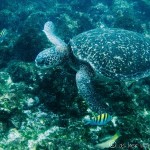
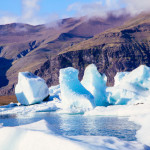
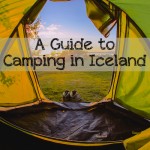
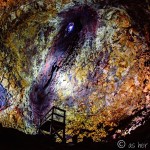
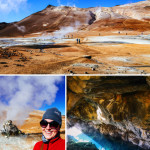
I have been waiting for your post on the Silfra Fissure for ages and I’m so excited to finally read it! So sorry about your GoPro – glad it’s OK! Thank you for all the information and as always, your pictures fantastic. I can’t wait to see this place for myself!
Thank you Kelsey! It’s a stunning place; I’m not sure my photos/video do it justice. I’m glad you’ll get to experience it on your upcoming trip — I look forward to seeing your photos!
Hello Erica,
I am totally taking so many tips from your iceland blog. It is so inspirational and must say have made my decision to take a trip to iceland a good one, thanks to your articles.
Regarding the snorkel trip, do you think it was totally worth it and could you go deep a bit if your swimming skills were good enough.. the first picture you posted of a person touching both the plates is clearly from a scuba dive i believe. So back to the question was it worth the time and money ?
2, I am travelling next week, is it a good time for this ?
Regards
Vishal
Thank you, Vishal! RE: the snorkel trip, I thought it was worth it, but I would have preferred to scuba dive (I am certified). But the cost was so high — $300 to scuba vs. $130 to snorkel — that I decided to snorkel even though I’d prefer to dive down deeper for better photos. Yes, you could take a deep breath and try to dive down deeper on your own with just a snorkel mask, but the water is so cold. As for if it’s worth the time and money, that is up to you — I love the underwater world and taking pictures of it, so I knew I had to do this in Iceland. If it’s not a big priority to you, then you can skip it. Totally depends on how high your interest is. The photos are pretty true-to-life, if that helps — what you see is what you get. It is uncomfortable in the cold water (and sort of a long process to get prepared, dressed in the proper gear, learn the rules) so if those details deter you, then maybe skip it. As for if it’s a good time of the year to go, I went around Sept. 1st last year, so about the same time as your trip — it’s a fine time to go. Good luck with your decision! Have a great trip to Iceland!
–Erica
Hey, thanks for writing back.
3 hours sounds fair enough, we are camping around south iceland and we have rented a camper(3 adults). So did you drive to them or did they pick you up at any spot ?
We prefer driving to them since we already have rented a camper. Also did you book the activity before you got there (am reaching this friday).
Regards